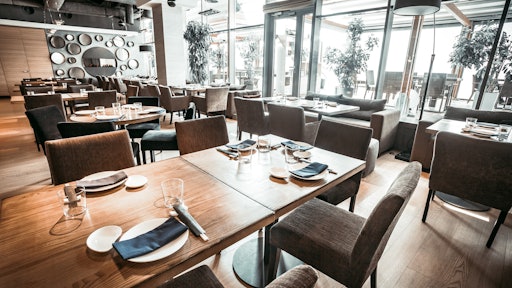
After enduring one of the hardest years of business in recent memory, the restaurant industry is finally able to re-open in the United States. Due to the Coronavirus disease (COVID-19), restaurateurs have had to radically rethink the way they operate, making pivots and sacrifices to keep their doors open.
But, there are three trends that will continue to be top of mind for restaurant operators even as businesses reopen and customers are welcomed back on site.
The drive toward digitization
Digitalization in particular offers the opportunity to master this transformation of the market and at the same time develop innovations for future challenges. This phase can be an opportunity for long-term optimization and being prepared for future challenges. Thanks to automated processes, restaurants can transform themselves to run their operations smoothly, increase their quality and provide a comfortable experience for their guests. From manufacturing processes to distribution, to data-driven marketing and the disruptive role of social media, there are a number of tools that can be helpful for optimizing processes.
An emphasis on hygiene
People are scrambling to get back to normal, but the pandemic has changed the way society functions. New behavioral patterns show guests being more cautious in regards to general hygiene and restaurant sanitation. This makes it all the more important for restaurants to build trust and a sense of security among guests. So, while making the guests feel comfortable now, farsightedness is required.
Planning capacities efficiently with table reservation management is important for restaurateurs to maintain the distance regulations in the dining area. Reservations are therefore strongly recommended with a digital table reservation system, so restaurants can plan capacities optimally and conveniently. Many have also switched to digital menus and QR codes to avoid having to sanitize menus after each use.
Changing customer behavior
Looking ahead, going out to dinner will still remain a social event where people get together with friends and family to catch up and have a good time. Lunch services during the week however will be less fruitful than in the past due to the fact that many people will still work from home offices long after the pandemic, to the extent that lunch business will generally weaken and evening business will flourish.
As a result of these changes, businesses should ask themselves, how large or small should our selection be? Are the prices still profitable or does the calculation have to be adjusted?
Restaurants can adapt by adjusting their menu and optimizing offerings so that costs and waste are reduced. This also gives restaurateurs the opportunity to adjust their pricing so that they can operate economically in these difficult times. Taking a multichannel approach to customer communication for these two dining occasions will also be essential. For example, making people aware that there are lunch specials even as they continue to work from home or that there are updated dinner hours as restrictions are lifted.
The restaurant industry has changed dramatically after having to close down shop overnight and operate at limited capacity. The lasting impact of the pandemic will see restaurants continue to embrace digitization and hygiene while addressing a new set of customer behaviors. Restaurants that use technology to optimize operations and improve customer communication will be the ones who succeed in a post-pandemic world.
![Adobe Stock 280800711 [converted]](https://img.foodlogistics.com/files/base/acbm/fl/image/2021/08/AdobeStock_280800711__Converted_.611e898daa123.png?auto=format%2Ccompress&fit=crop&h=75&q=70&rect=0%2C53%2C900%2C507&w=75)

























